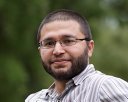THE MODEL OF PRODUCTIVE WAKAF MANAGEMENT IN THE AGRICULTURE SECTOR TO INCREASE THE FARMER'S WELFARE (CASE STUDY OF PENATARSEWU SIDOARJO' MUHAMMADIYAH BRANCH MANAGEMENT)
Downloads
This study aims to create a model for productive management of waqf in the agricultural sector in the Penatarsewu Muhammadiyah Branch Management (PRM) and analyze its impact in improving the welfare of farmers based on indicators of maqashid syariah. This research uses a descriptive qualitative approach with a case study method. The subjects of this study were the management of the Penatarsewu PRM board of waqf councilors and sharecroppers. Data is collected by conducting interviews, observations, and documentation. Data analysis techniques using data reduction, data presentation, and drawing conclusions. Triangulation technique by cross-checking the findings of primary and secondary data is used to determine the validity of the data. Research is limited to rice field endowments or the agricultural sector. The results showed that the productive waqf management model of Penatarsewu PRM uses a mukhabarah agreement with a profit-sharing system of 60:40. The results have an impact on improving the welfare of farmers based on the indicator maqashid syariah. Judging from al-maqashidul khams, the most successful are Hifdhud Din, Hifdhul Aql, and Hifdhun Nasl. However, the Penatarsewu PRM is expected to be able to direct the results of waqf to productive goals, such as the formation of an entrepreneurial spirit.
Keywords: Productive Waqf, Mukhabarah, Maqashid Syariah, PRM
REFFERENCE
Departemen Agama. (2015). Tanya Jawab Tentang Wakaf Uang. Jakarta: Bimbingan Masyrakat Islam Direktorat Pemberdayaan Wakaf.
Anshori, A. G. (2005). Hukum dan praktik Perwakafan di Indonesia. Yogyakarta: Pilar Media.
Astuti, D. (2013). Kamus Populer Istilah Islam. Jakarta: Gramedia Pustaka Utama.
Bungin, B. (2013). Metodologi penelitian sosial dan Ekonomi. Jakarta: Kencana Prenada Media Group.
Choiriyah, C. (2017). Wakaf Produktif dan Tata Cara Pengelolaannya. Islamic Banking, 2(2), 25–34.
Ghony, M. Djunaidi, and F. A. (2012). Metodologi penelitian kualitatif. Yogyakarta: Ar-Ruzz Media.
Gross, M. L. (2007). A Muslim archipelago: Islam and politics in Southeast Asia. Washington D.C: Government Printing Office. National Defense Intelligence College.
Haroen, N. (2007). Fiqh Muamalah (2nd ed.). Jakarta: Gaya Media Pratama.
Huda, M. (2015). Mengalirkan manfaat wakaf: potret perkembangan hukum dan tata kelola wakaf di Indonesia. Bekasi: Gramata Publishing.
Lutfi, M. (2011). Optimalisasi pengelolaan wakaf (1st ed.). Makassar: Alauddin University Press.
........ (2012). Pemberdayaan wakaf produktif: Konsep, kebijakan, dan implementasi (1st ed.). Makassar: Alauddin University Press.
Masyhadi, A. (2018). Maqashid syariah sebagai paradigma pengembangunan ekonomi Islam, Al-Musthofa: Journal of Sharia Economics, 1(2), 54-63.
Qoẖaf, M. (2005). Al-Waqfu al-islí¢miyu tathawwuruhu, idí¢ratuhu, wa tanmiyí¢tuhu (T. M. M. Ridha, Ed.). Jakarta: Pustaka Al-Kautsar Group.
........ (2005). Manajemen wakaf produktif. Jakarta: Khalifa.
Raco, J. (2010). Metode penelitian kualitatif: jenis, karakteristik dan keunggulannya (N. Mfzuj, Ed.). Center for Open Science.
Sabiq, S. (1932). Fiqh al-sunnah. Madinah: Maktabah Hudimat al-Hadis.
Sugiyono. (2013). Metode penelitian kuantitatif kualitatif dan R&D. Bandung: Alfabeta.
Suhendi, H. (2013). Fiqih mu'amalah. Jakarta: PT Raja Grofindo Persada.
Sujana, W. (2010). Analisis pendapatan dan faktor-faktor produksi yang mempengaruhi usahatani tomat di Desa Lebak Muncang, Kecamatan Ciwidey, Kabupaten Bandung. Skripsi tidak diterbitkan. Bogor: Institut Pertanian Bogor.
Supriyati. (2011). Metodologi penelitian. Bandung: Labkat Pers.
Usman, N. (2013). Pengelolaan wakaf produktif dalam bentuk SPBU studi kasus SPBU Masjid Agung Semarang. Jurnal Muqtasid, 4(1), 145-163.
Yin, R. K. (2008). Studi kasus desain dan metode (M. D. Mudzakkir, Ed.). Jakarta: Raja Grafindo Persada.
Yin, R. K. (2011). Applications of case study research. North America: SAGE Publications.
Zarqa, M. A. (1989). Islamic economic: An approach to human welfare, reading in the concept and methodology of Islamic economics. Selangor Darul Ehsan: Pelanduk Publication.
https://databoks.katadata.co.id/datapublish/2018/03/07/lahan-panen-padi-terkonsentrasi-di-pulau-jawa, Diakses pada 27 Juli 2019
https://dosen.perbanas.id/indikator-kesejahteraan-menurut-maqasid-syariah/
Copyright (c) 2020 Inayah Rahman, Tika Widiastuti

This work is licensed under a Creative Commons Attribution-NonCommercial-ShareAlike 4.0 International License.
- Authors who publish with Jurnal Ekonomi Syariah Teori and Terapan agree to the following terms:
- The journal allows the author(s) to hold the copyright of the article without restrictions.
- The journal allows the author(s) to retain publishing rights without restrictions.
- The legal formal aspect of journal publication accessibility refers to Creative Common Attribution-NonCommercial-ShareAlike (CC BY NC SA).
- Creative Commons Attribution-NonCommercial-ShareAlike 4.0 International License.
-

- Jurnal Ekonomi Syariah Teori and Terapan is licensed under a Creative Commons Attribution-NonCommercial-ShareAlike 4.0 International License.



















